
Manatee
Manatee
Manatee
Do you know the animal called 'manatee'? It's a large mammal that lives in the sea and rivers and swims very gracefully. It's an animal that's rarely seen in Japan, so many people might not be familiar with it. Let me introduce you to the manatee!
Manatee Basic Infomation
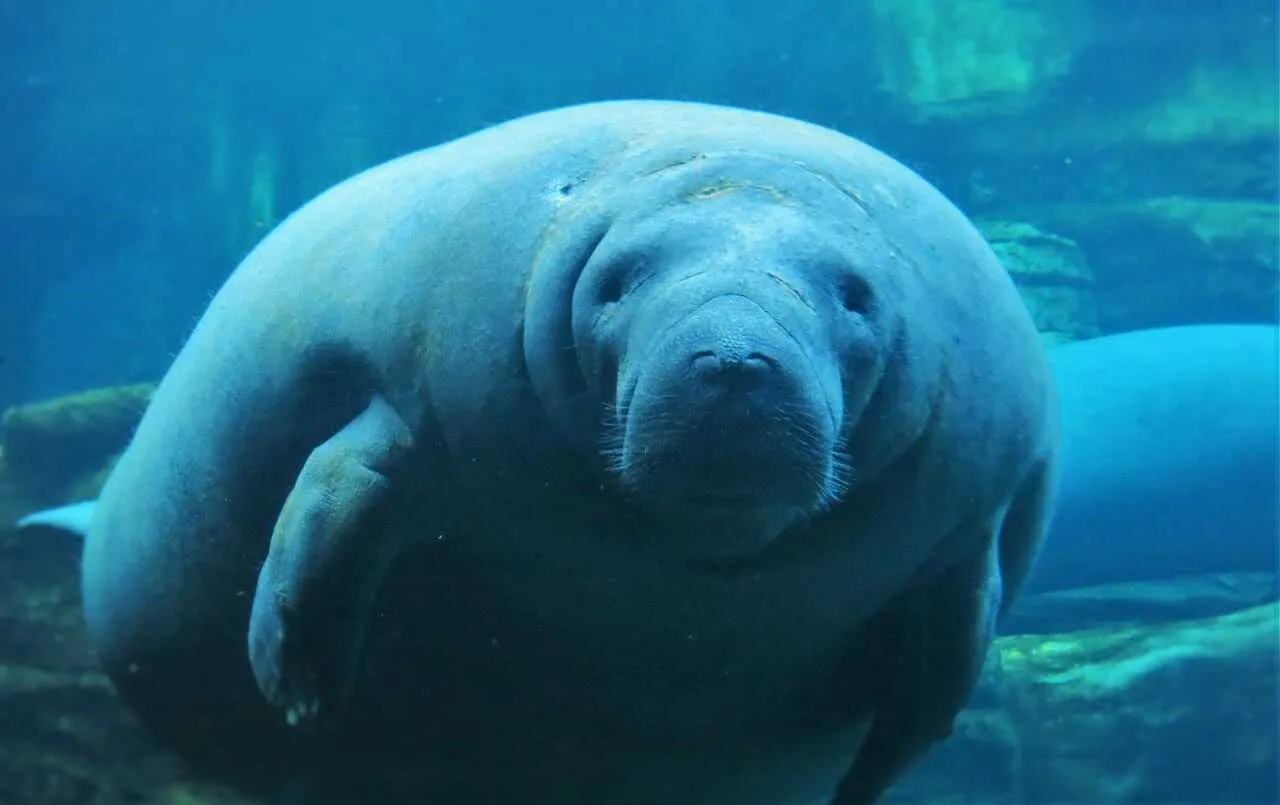
| Property | Value |
|---|---|
| Scientific Name | Trichechus Linnaeus, 1758 |
| Taxonomic Status | Accepted |
| Rank | Genus |
| Vernacular Names | Manatees |
| Kingdom | Animalia |
| Phylum | Chordata |
| Class | Mammalia |
| Order | Sirenia |
| Family | Trichechidae |
| Genus | Trichechus |
| Habitats | Marine, Freshwater |
| Descriptions | Manatees are large, fully aquatic, mostly herbivorous marine mammals sometimes known as sea cows. There are three accepted living species of Trichechidae, representing three of the four living species in the order Sirenia. |
| Conservation Status | Vulnerable |
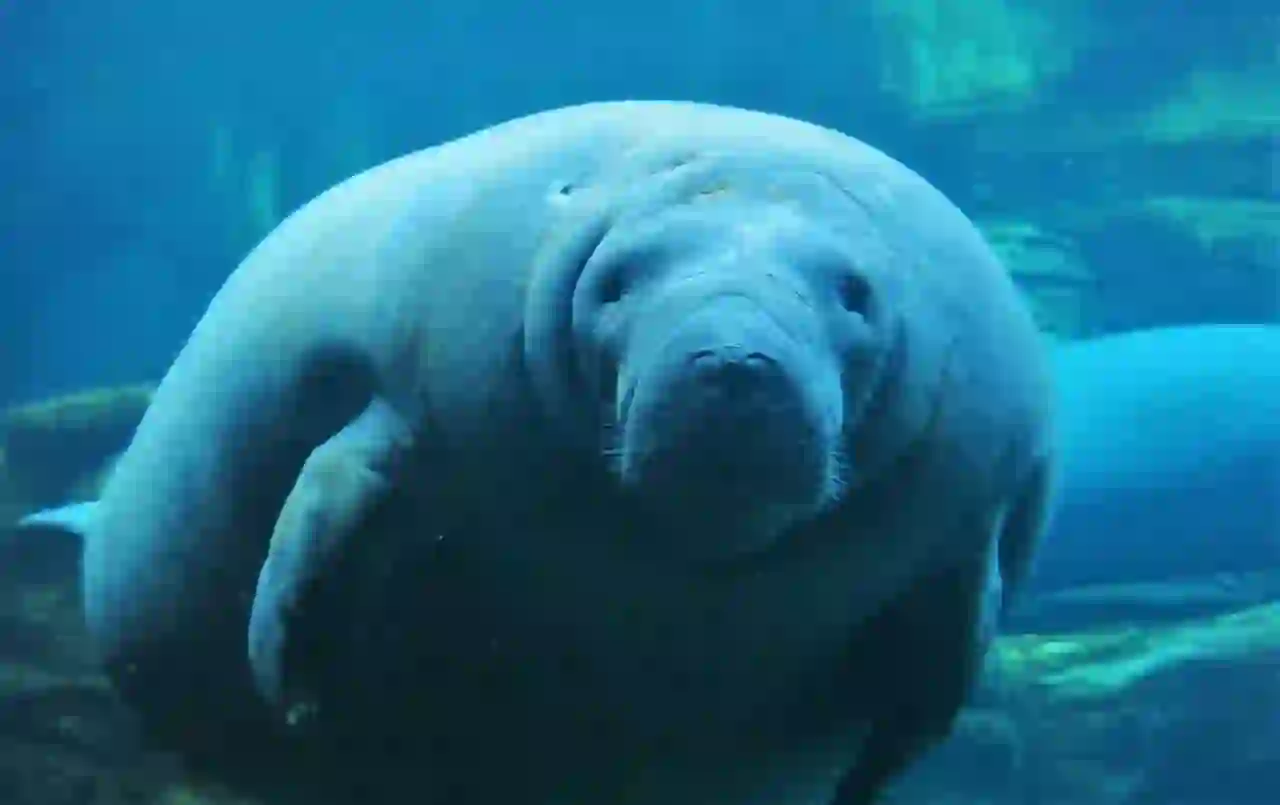
Class: Mammalia, Order: Sirenia, Family: Trichechidae, Genus: Trichechus
Body length: 2.4 to 4.5 meters
Weight: 300 to 1,500 kilograms
Manatees live in warm regions such as Africa, the eastern coast of North America, northern South America, Cuba, Jamaica, the Dominican Republic, Trinidad and Tobago, and Haiti.
As mentioned, there are differences in body length and weight, making it seem like there are many types of manatees, but there are only three species. Even the smallest species is 2.4 meters long, indicating how large they are, even among other marine and river-dwelling creatures.
Manatees have mouths and noses that extend outward, and their bodies are covered with 25,000 to 30,000 hairs. Their tail fins are round and paddle-like. Manatees have molars, but these teeth fall out and are replaced regularly. Manatees are herbivorous, but the plants they eat contain silicic acid, which wears down their teeth. When a tooth becomes too thin, it falls out, and a new tooth grows in its place.
Although manatees live in the sea and rivers, they are not fish—they are mammals. They do not have gills; they breathe through lungs. When they swim underwater, they are essentially 'diving.' Every few minutes, they rise to the surface to breathe. It's easy to imagine how adorable they must look when they poke their heads above water to breathe.
Manatee Q&A

What is the origin of the manatee's name?
The origin of the manatee's name has various theories. The English word 'manatee' may come from the phrase 'ma natees,' which means 'half woman, half fish.'
Another theory is that it derives from the Latin word 'manus,' which means 'hand.' It could also be from the language of the native Taino people in the Caribbean, where 'manatee' means 'breast' or 'chest.'
The scientific name for the order Sirenia, to which manatees belong, comes from the Greek mythological creature 'Siren.' A Siren has the upper body of a woman and the lower body of a fish or bird, luring sailors with her beauty and song, then dragging them into the sea.
This Siren description somewhat resembles the earlier explanation of the origin of the manatee's name, so it could be a plausible theory.

Why do manatees live where they do?
Manatees typically live in tropical and subtropical rivers, lakes, estuaries, and coastal areas. While they can sometimes be found in the sea, the Amazonian manatee lives only in freshwater.
Manatees move around day and night, searching for food. They might sleep when tired and move when hungry. They usually live alone but can be found in pairs, with their young, or in small groups of about six individuals.
As mentioned earlier, manatees breathe through their lungs, not gills. When resting, they breathe every 15 minutes, but when active, they need to breathe every 3 to 4 minutes. How do they manage this?
Manatees have a low metabolism, reducing their oxygen consumption, allowing them to stay underwater for longer periods. Unlike other diving creatures, their heart rate doesn't drop significantly, and in emergencies, like fleeing predators or having limited air access, they can maintain eight heartbeats per minute.
Their lower metabolism allows them to store large amounts of fat, which can be used for energy during food shortages. While manatees prefer warm climates and are sensitive to cold, their fat reserves enable them to endure short periods of cold weather.
Their lifespan ranges from 40 to 70 years, likely due to their large body size and other adaptive traits.
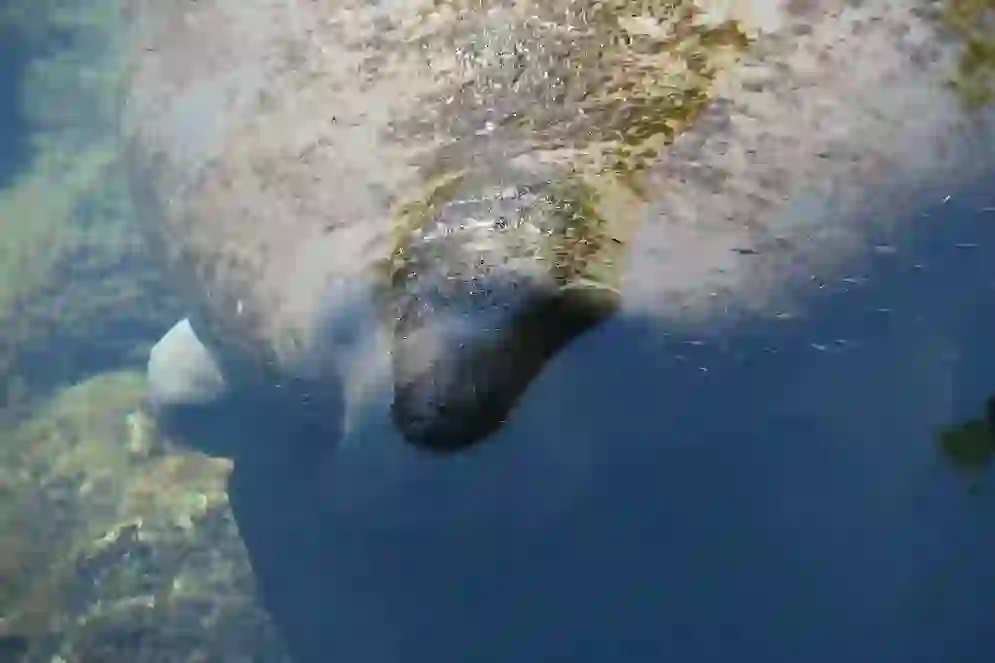
What do manatees eat?
Manatees are herbivores, eating seagrasses, aquatic plants, seaweed, and plants growing along riverbanks. Among aquatic mammals, only dugongs and manatees are herbivorous.
Manatees are covered in hair that helps them sense water currents. The hair around their mouths is particularly sensitive, allowing them to find food.
Manatees have flippers with joints, similar to human elbows, allowing them to move their flippers with flexibility. They use their sensitive whiskers to find plants and use their flippers to grab and eat them.
Although manatees have teeth, they don't solely rely on them for chewing. They have a hard part of the skin inside their mouths, known as the 'chewing plate,' which, combined with their back teeth, helps grind down food.
Given their large size, you might wonder if they get hungry, eating only plants. Manatees need to consume about 30% of their body weight in plants. This means they need to eat about 90 kilograms of plants per day, explaining why they spend much of their time eating.

Is it true that manatees are slow swimmers?
Manatees have a gentle nature and typically swim at speeds of 1 to 8 km/h, which is slower than a walking human. However, they can swim at speeds of up to 20 km/h by vigorously flicking their tail fins. This higher speed is used only for emergencies, and they can't sustain it for long periods.
Let's focus on the tail fin. Manatees have round, paddle-like tail fins. While they can't flap them continuously, a single powerful flick can generate high speed.
Marine mammals like dolphins and dugongs have tail fins that are split into two parts, allowing them to swim quickly over large ocean areas, but they lack maneuverability. The manatee's round tail fin provides better maneuverability in narrow rivers, adapting to its habitat.

Are manatees lazy?
Manatees are considered one of the most relaxed aquatic mammals, giving the impression that they are lazy. However, their body structure is designed for comfort.
A manatee's lungs span across its entire back, making it seem like they have a built-in floatation device. Their heavy bones allow them to sink by simply releasing some air from their lungs.
To compare, humans float in a pool or ocean with ease but need significant effort to sink. Divers even carry weights to descend into water. Manatees' body structures help them adapt to aquatic life.
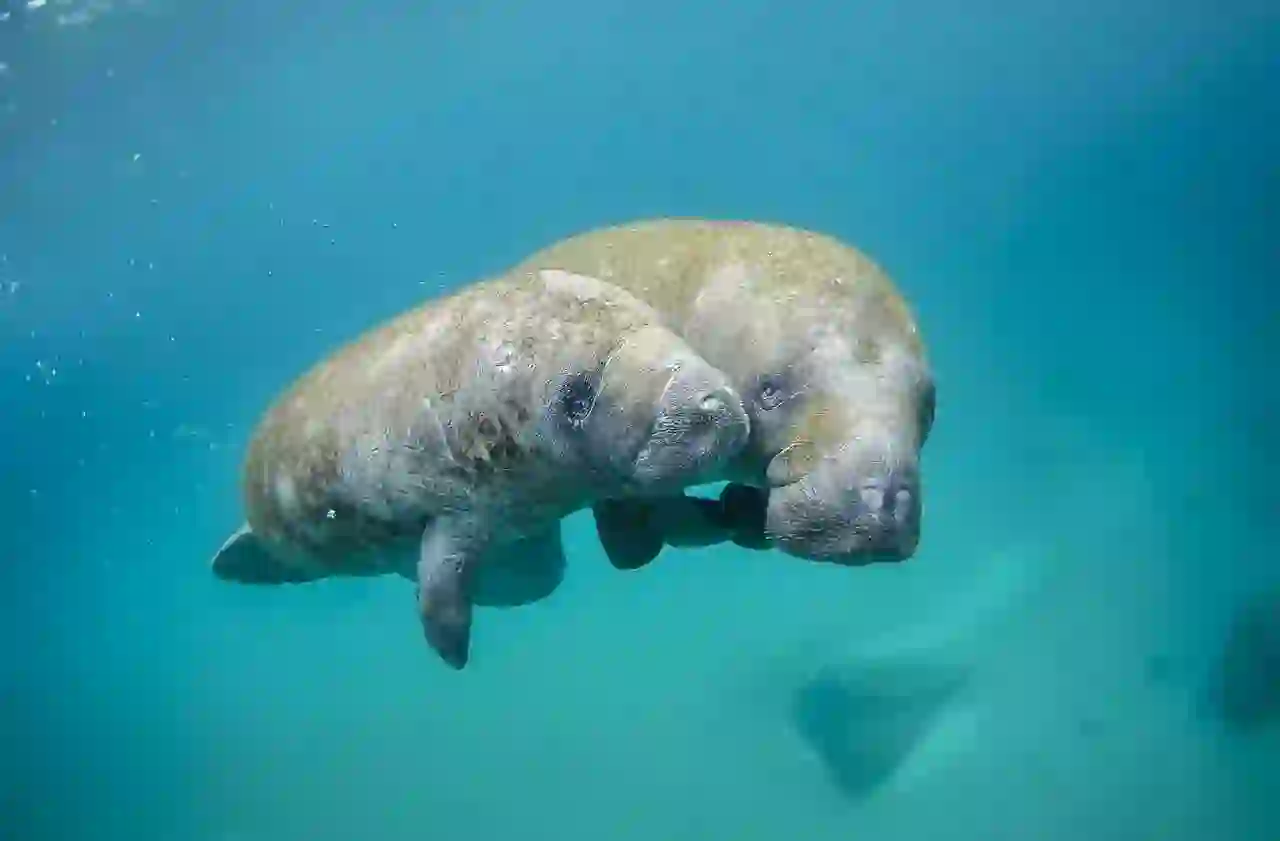
How do manatees reproduce?
Manatees have a gestation period of about one year and give birth to one calf underwater. Given that they breathe through lungs, how do they manage underwater births?
The first thing the mother does for the newborn is to help it breathe by guiding it to the surface. This makes the birthing process quite busy.
Within an hour of birth, the calf can swim on its own. Although fast-growing, the calf will continue to drink milk for three years, which is a long time by human standards, but necessary for proper growth.
As they grow, they start eating plants like adult manatees. The ability to eat a lot of plants is a sign of health.
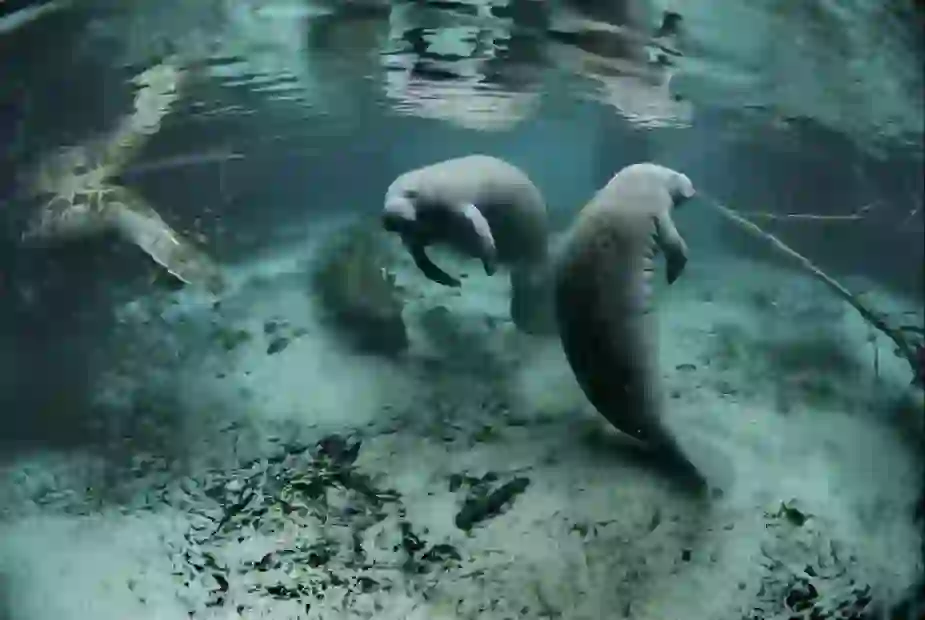
Are manatees mermaids?
The earlier explanation of the origin of the manatee's name might have made you think of mermaids. Manatees are believed to be the source of the mermaid legend. In Japan, the dugong is said to be the mermaid model, while in the West, it's the manatee.
However, manatees don't look like the mermaids we imagine. So where did the mermaid legend come from?
The explorer Christopher Columbus mentioned seeing three mermaids in his logbook during his 1493 voyage to the Caribbean near the present-day Dominican Republic. However, he was surprised that they didn't look as beautiful as expected, noting that they only vaguely resembled human-like faces.
Given that manatees and mermaids were spotted in the same location, it's likely Columbus mistook manatees for mermaids.
Manatees don't have human upper bodies, but their graceful swimming might have caused the confusion.
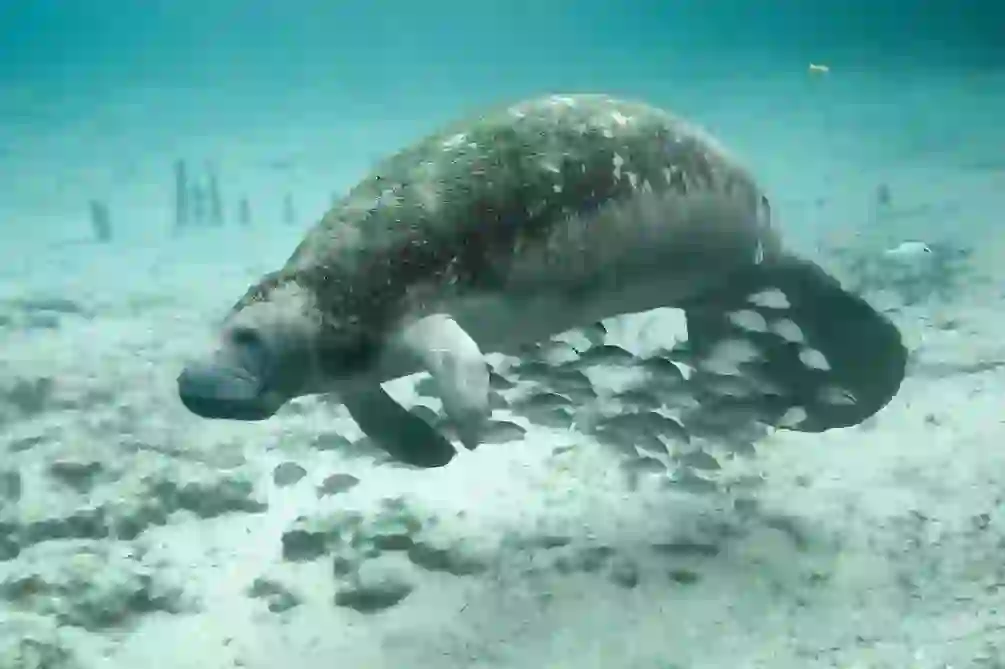
Are manatees endangered?
Manatees are currently endangered, but what caused their numbers to decrease?
Although manatees live in water, they don't go very deep, usually only about three meters. Since they often stay near shores and riverbanks, they are easily captured, and their meat and oil were used for food, with their tough skin used for various products.
Particularly in the Amazon, manatee meat was an important protein source. Misguided beliefs that the meat from mother manatees with calves was tastier also led to overhunting.
Manatees get caught in fishing nets, and their attempts to break free can damage the nets, leading fishers to see them as a nuisance. Since manatee meat and skins are valuable, they continue to be hunted.
Another factor is habitat destruction due to development, affecting the growth of aquatic plants, their food source.
The Amazonian manatee was heavily hunted between 1935 and 1954, with its skin used in industrial products like conveyor belts. Around 130,000 manatees were killed during this period.
Despite national laws prohibiting hunting, illegal hunting still persists. Conservation efforts include rehabilitating orphaned calves and releasing them into the wild, as well as environmental education to promote manatee conservation.
We hope more people will join the effort to protect and coexist with manatees.

Would you like to become a part of the 'Animalbook.jp'?
Turn your knowledge into Q&A and share it with the world. ※Publication will be activated after purchase. Let's share information together!
Manatee Type of List

The three main types of manatees are the West Indian manatee, the Amazonian manatee, and the West African manatee.
Information
Congratulations! You are the first commenter!

Create Your Favorite List!
Manatee
Save the animals you love! Build your own list to quickly revisit your favorites later.

Would you like to leave a comment?
※Please note: This is for the purchase of rights to post comments within the article.
Find Your Favorites!
Our shop offers a unique and attractive selection of goods themed around various animals.
Manatee References
Manatee Introduction of media used
Pixabayが提供するCaelan Kelleyの動画

PublicDomainImagesによるPixabayからの画像

McleroyPhotographyによるPixabayからの画像

Benjamin BrandtによるPixabayからの画像

出典:commons.wikimedia.org

出典:commons.wikimedia.org

出典:pixabay.com
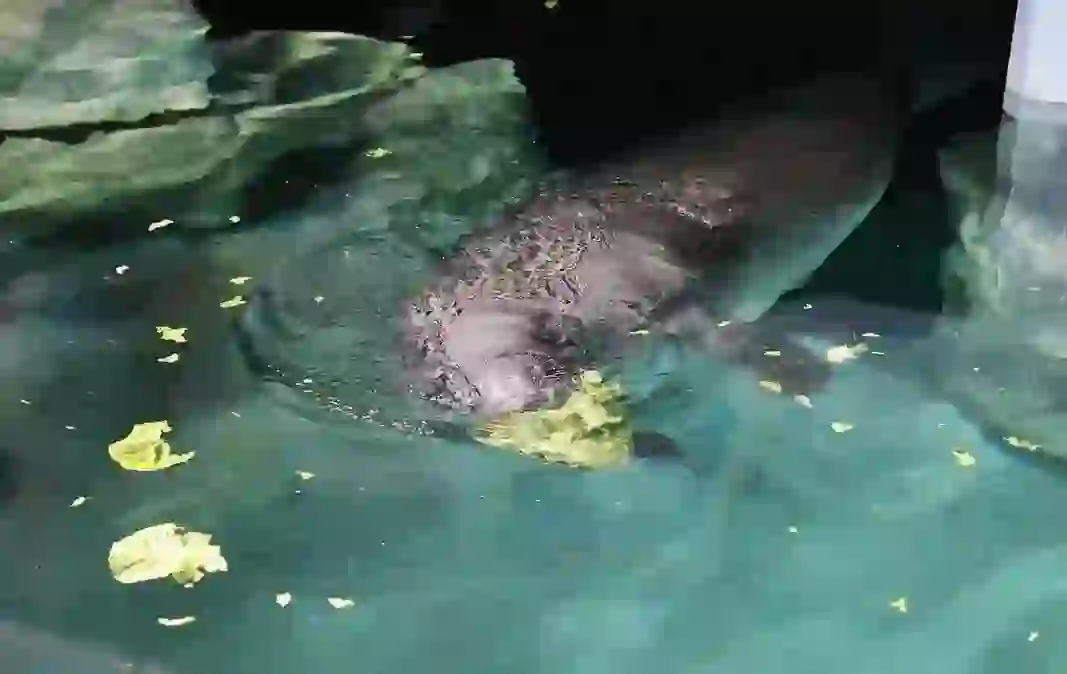
出典:commons.wikimedia.org

出典:pixabay.com
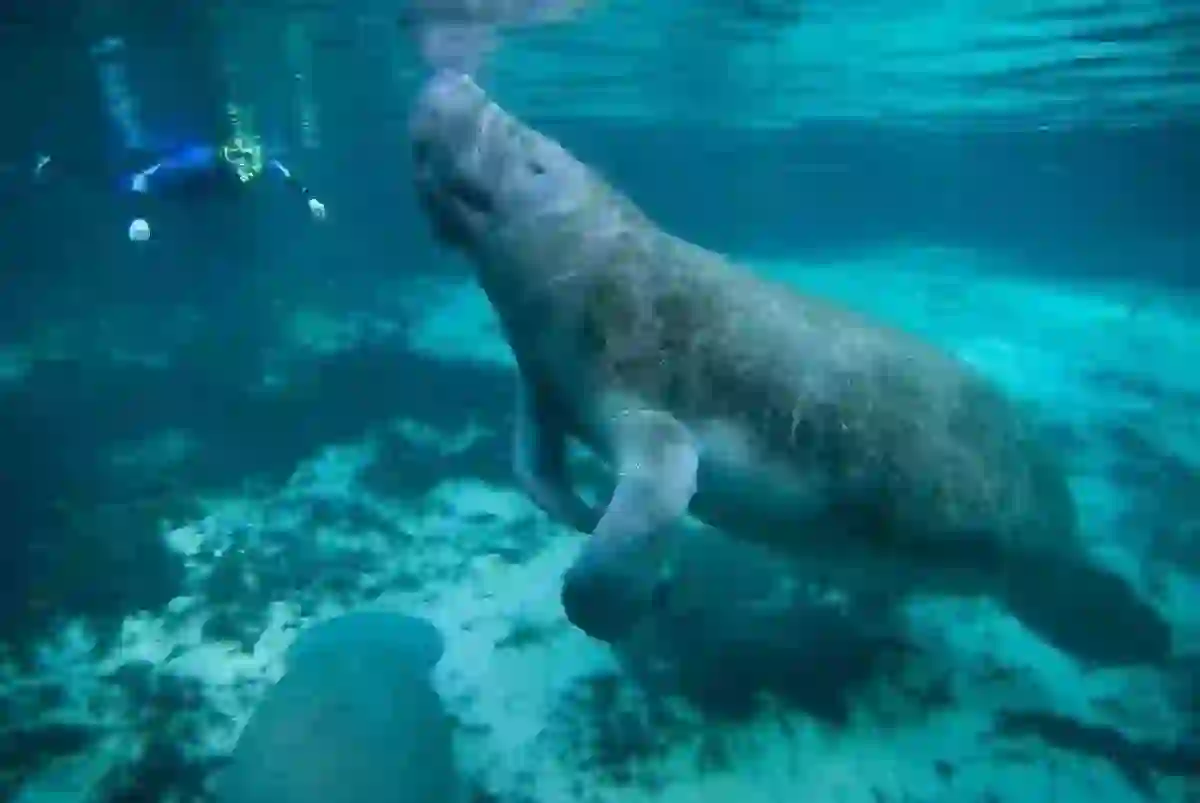
出典:pixabay.com

出典:pexels.com
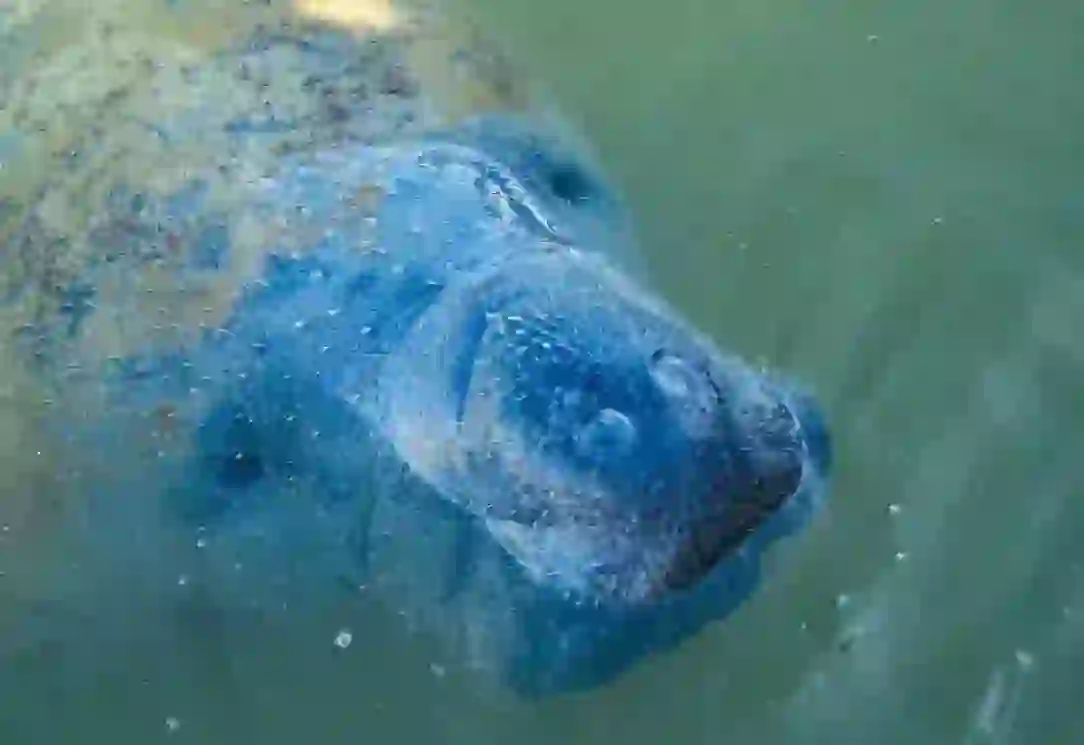
出典:pexels.com

出典:commons.wikimedia.org

Help Enrich Our Animalbook.jp with Your Media!
We are constantly looking to expand and enrich our Animalbook.jp with amazing photos and videos of animals. If you have any media that you'd like to share, please contribute and help us showcase the beauty and diversity of the animal kingdom. Your submissions will be credited and featured in our encyclopedia, reaching a wide audience of animal lovers.


















